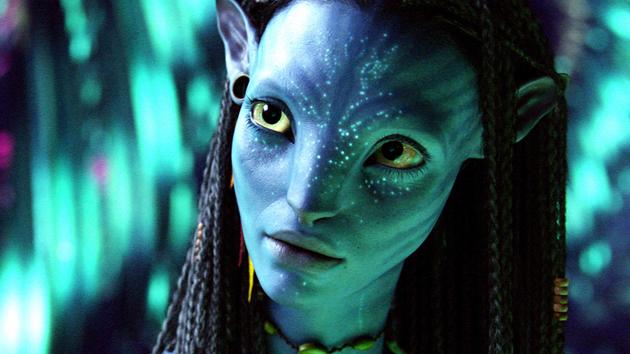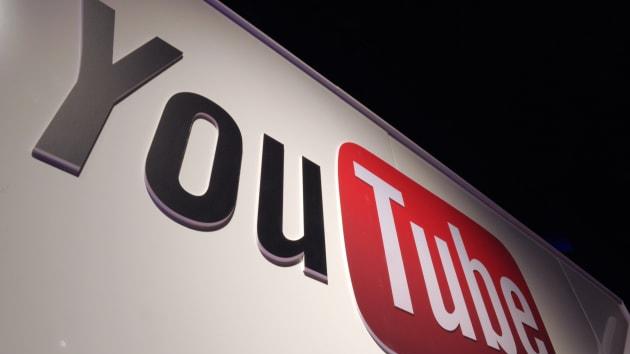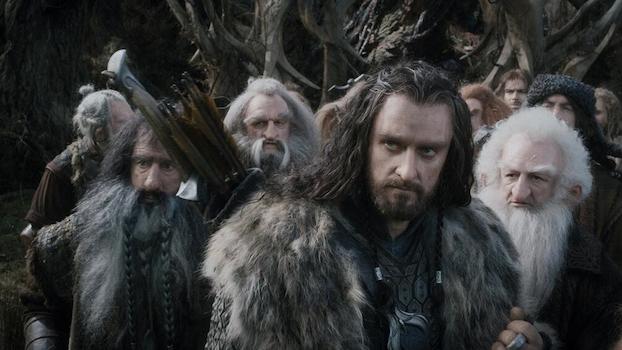48fps
Latest

James Cameron: High frame-rate cinema is 'a tool, not a format'
Sadly, James Cameron is going to probably retire making Avatar sequels that focus more on technology than story or his trademark action-flick set-pieces. Armed with $2.8 billion in box office receipts from the first movie, Cameron's been on a technology sojourn. He's been extremely vocal about his support for high frame-rate (HFR) cinema and stereoscopic 3D for filmmaking in the past, but it seems like he's changing his tune slightly these days.

James Cameron's 'Avatar' sequels will stick to 48 frames per second
There was talk for a while that James Cameron would shoot the Avatar sequels at a brisk 60 frames per second, which is no mean feat when people aren't yet sure about 48FPS movies. However, it now looks like the famed director is scaling back those ambitions. He tells Empire that he was considering 60FPS to accommodate home viewers (since it's better-suited to TVs), but that he's ultimately sticking with 'just' 48FPS; he's plugging into a "more mature" system where the slower speed makes sense. The sci-fi sagas won't push the boundaries of moviemaking technology quite as far as you might have expected, then, but the chances are that they'll still be visual extravaganzas.

YouTube to introduce support for 60 frames per second
YouTube videos rendered in 48 and 60 frames per second are to finally become a reality in the coming months. Following a year in which 1080p and 60fps have become increasingly familiar bedfellows for the video game industry, YouTube promoted its higher framerates with new videos of Battlefield: Hardline and Titanfall. Among other features coming to the video site including fan-submitted translations and tagged shout-outs to collaborators, the one to keep an eye on is Fan Funding. Essentially an online tip jar, this allows viewers to donate to content creators direct through YouTube. For now, only "a handful of creators" are testing the feature out. Head below the break for the Battlefield: Hardline and Titanfall vids in full 60fps glory.

YouTube is upgrading to 60fps, adding a tip jar for donations and much more
YouTube is about to get a whole lot better, with a slew of new features freshly announced at this year's VidCon. Google's video wing will soon get support for clips running at 48-and-60 frames-per-second, which should be perfect for video game footage that you've captured an uploaded from your PlayStation 4 or Xbox One in addition to those 1080p60 game trailers that are quickly becoming the norm. You'll have to make sure 1080p resolution is selected to get the benefit of the higher frame-rate, naturally, and we've embedded a sample after the break. Customizable and, as the YouTube Creators blog post tells it, prettier-looking annotation cards as well as some new tools that your fans can use are en route, too. What are those? Well, viewers will soon be able to drop you a few bucks here and there so you don't have to rely on ad revenue alone.

Peter Jackson promises improved high frame rate showing for The Hobbit: The Desolation of Smaug
The first Hobbit movie served as a debut for 48fps "high frame rate" movies, and found a cool reception from critics and many fans. This time around, as The Hobbit: The Desolation of Smaug hits theaters, director Peter Jackson is doubling down on the rhetoric, claiming that an improved HFR is the best way to see the movie. Quoted by Variety, Jackson repeated claims that this new process improves the quality of 3D, and says he experimented with a different approach to color grading that takes away from the HD-ish look many disliked the first time around. The second Hobbit movie has HFR screenings at 812 screens, nearly double the last year's number. This time around press and critics saw the film in 24fps, instead of 48fps, but the various premieres did feature HFR showings. By now some of you have either seen the movie or are going to a screening this weekend, let us know if you picked the super-smooth 48fps showing or stuck with old school 24fps projection.

Advanced ticket sales for The Hobbit start, 450 theaters are ready for 48 fps 3D
Even if you aren't a Peter Jackson fan, you might still be interesting in seeing what all the fuss is about regarding the latest theater technology, 48 fps. It shouldn't be too hard either, because while the high frame version of The Hobbit: An Unexpected Journey is a limited release, the 450~ locations planned (out of approximately 4000 theaters showing the flick) cover just about every major and mid-sized city in the US. Regal and AMC theaters might be your best bet as they lead the pack in LA, with 19 theaters there ready for the new technology. Advanced ticket sales are already available for the December 14th release, but you'll want to look for 'HFR' or the words High Frame Rate before check out, if you want to see it the way Peter Jackson intended. If things go well, you can expect a much wider release of the 48 fps version of the sequel, which is already set to hit theaters in December 2013. Update: There's an official list of HFR equipped theaters on The Hobbit website, click here or check it out after the break to find one in your neck of the woods.

Red posts high frame-rate video demonstration to smooth out misconceptions
If you're still unsure about what you'll be getting into if you see the 48fps version of "Hobbit," Red has jumped into the fray with an article on its website and, most importantly, high quality HFR (high frame-rate) videos. It delves into all the aspects of the tech, starting with a primer on the minimum frame rate required to perceive motion, illustrated by a pair of clips to show the threshold. From there it details "judder" when panning at 24 fps versus 60 fps, motion blur, the possibility of brighter projection with HFR in 3D and of course, action at slower versus faster frame speeds. Finally, it demonstrates the hated "TruMotion" soap opera-esque interpolation method on modern TVs, and why that's different from true fast-frames. Sure, Red has a vested interest in seeing upcoming HFR films from its Epic camera succeed, but a little education might be what's needed to break old habits.

Peter Jackson's 48 fps version of The Hobbit said to be a 'limited release' only
All told, we can't deny Peter Jackson's caused some madness since announcing the scheme to shoot his upcoming Hobbit film at a high frame-rate, rather than sticking with the more common 24 fps, Hollywood-style method. Regardless, rumor now has it Warner Bros. is supposedly planning a "limited release" of the 48 fps version because, according to Variety, the studio "wants to protect the format" by choosing to go the select-viewing route -- that said, WB's allegedly hoping to "expand the HFR release for the second and third installments." Still, nothing's set in stone just yet, so we'd hold off on throwing any temper tantrums (or celebrating, depending on which side you're on) until we hear something official from Warner.

Comic-Con fans go crazy over Hobbit teaser, but not the 48fps version
Two different audiences and two very different screenings. After unfamiliar 48fps Hobbit footage was pretty universally panned back at Cinema-Con, Peter Jackson decided to play it safe and show Comic-Con fans the traditional low frame-rate teaser. Their response? They loved it. Which would, you'd think, give the head hobbit a clear message: his film works better without the wacky frame rate, but that's just not how he sees it. Writing on his Facebook page, he said "I've always been happy to bet on myself" and the 48fps version of Hobbit is "something really special" when you watch the entire movie. In other words, he's sticking to his orc sword, and in the meantime we're left to wonder what would have happened if the Comic-Con crowd -- who are perhaps more his kind of people than Cinema-Con goers -- had been shown the tricked out footage.

Editorial: Despite shaky 48 fps Hobbit preview, high frame rates will take off
Well actually, the Hobbit preview wasn't shaky, it was smooth -- maybe too smooth -- and that's the point. "It does take you a while to get used to," Peter Jackson has admitted, referring to the surprisingly fluid motion of his 48 fps movie footage. But is he right to think audiences will even give it a chance? The launch of high frame-rate (HFR) cinema is surrounded by publicity in the run-up to the Hobbit's debut on December 12th, but it equally has a lot going against it. For starters, the film's 48 fps preview wasn't exactly received warmly. On top of that, the video-style appearance of HFR has a long history of being disliked by movie-goers -- past attempts since the 1970s have all flamed out. 85 years after the first 24 fps movies, the same number of frames are still going stubbornly through the gate (digital or otherwise) each second, so that must be what "filmic" is, right? Or will we look back on 24fps as the bad old days? Read on to see if these new/old-fangled frame speeds might survive, and though a 48 fps Hobbit trailer isn't available, we've provided a couple of clips to help you judge what two-dimensional HFR looks like.

Peter Jackson unfazed by 'Hobbit' footage pushback, but will stick to 24 fps for trailers
Calm down, cinema-goers. It just takes time to "settle in" to the strange new ultra-realistic world of high frame-rates, according to Peter Jackson, who's been responding to audience's rather strong panning of 48fps rough cuts from his upcoming 3D epic, Hobbit. Viewers' main beefs were the surprising appearance of the higher cadence footage, which almost looked like it was shot on video, as well as blemishes on actors and sets which were all-too-visible without the crutch of motion blur. But Jackson insists that the footage lacked special effects and color correction, and that the showing was perhaps too short to judge the frame-rate -- which is why he also says there'll be no 48 fps trailer. He even adds that he's now "very aware of the strobing, the flicker and the artifacts" when he's watching regular 24fps cinema -- so the real struggle for audiences might not be adjusting to the new way, but going back to the old.

Frame rate debate rages on with 48 fps projection of 3D Hobbit footage
With his use of Red cameras, 3ality rigs, and high frame rate 3D technology, no one can accuse Peter Jackson of being stuck in the past. Need more evidence of his anti-luddism? He just gave the first projection of footage from his 3D opus "The Hobbit: An Unexpected Journey" in its full 48 fps glory at the CinemaCon convention in Las Vegas. With the public having endured 80 years of 24 fps film-watching, Jackson appealed to viewers to allow their eyes to adjust to the doubled rate during the ten minute screening. But the reaction showed that public acceptance might take a while. One projectionist compared it to made-for-TV fare, and others referenced Mexican soap-operas and TruMotion. The reply to these criticisms by Jackson (and James Cameron) has always been that 3D is better suited to faster frame rates than 2D -- making it more immersive, reducing headaches and improving stereoscopy. We'll have to wait for the film's release this December to find out whether he's right, or if this attempt at high frame speeds will go the way of Showscan.

Peter Jackson shooting The Hobbit at 48FPS, should speed up those long walking scenes
Say goodbye to blurry Orcs, because The Hobbit is going 48 frames per second. King of Kong Peter Jackson announced via Facebook that the two-part Lord of the Rings prequel will be shot at an increased frame rate, double the 24FPS that has been the industry standard for the better part of a century. Halo's non-director preemptively addressed critics of the technology, comparing it to the transition from vinyl to CDs -- which, let's face it, some folks still aren't all that psyched about. The technology, when combined with a 48FPS projector, should cut down on blur and strobe. Jackson and Warner Bros. have their fingers crossed that a sufficient number of theaters will be capable of projecting at that speed when the film opens in December 2012. We're eagerly awaiting James Cameron's reaction -- and George Lucas's inevitable Star Wars re-re-re-re-release at the new speed.







